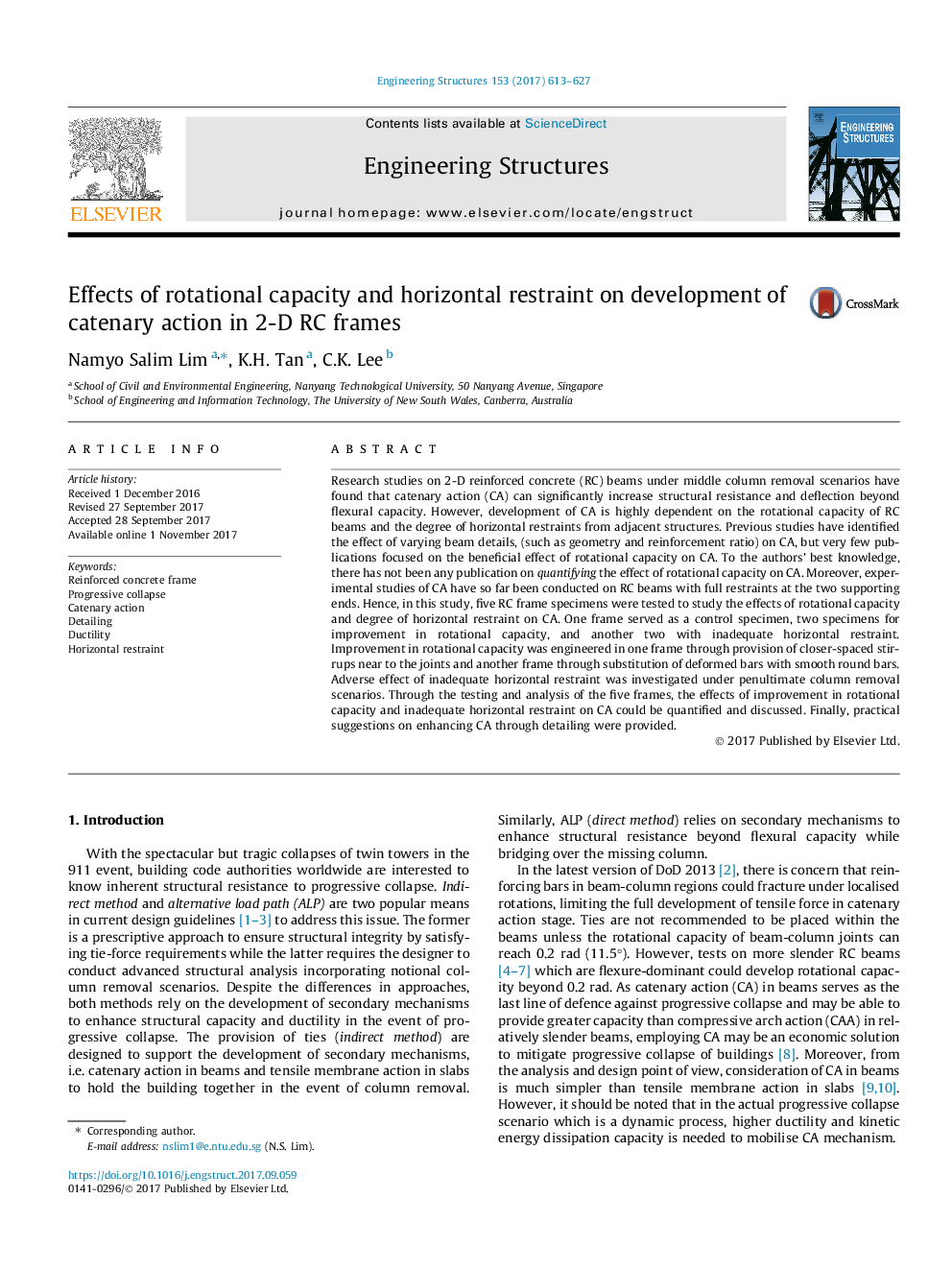| Article ID | Journal | Published Year | Pages | File Type |
|---|---|---|---|---|
| 6739368 | Engineering Structures | 2017 | 15 Pages |
Abstract
Research studies on 2-D reinforced concrete (RC) beams under middle column removal scenarios have found that catenary action (CA) can significantly increase structural resistance and deflection beyond flexural capacity. However, development of CA is highly dependent on the rotational capacity of RC beams and the degree of horizontal restraints from adjacent structures. Previous studies have identified the effect of varying beam details, (such as geometry and reinforcement ratio) on CA, but very few publications focused on the beneficial effect of rotational capacity on CA. To the authors' best knowledge, there has not been any publication on quantifying the effect of rotational capacity on CA. Moreover, experimental studies of CA have so far been conducted on RC beams with full restraints at the two supporting ends. Hence, in this study, five RC frame specimens were tested to study the effects of rotational capacity and degree of horizontal restraint on CA. One frame served as a control specimen, two specimens for improvement in rotational capacity, and another two with inadequate horizontal restraint. Improvement in rotational capacity was engineered in one frame through provision of closer-spaced stirrups near to the joints and another frame through substitution of deformed bars with smooth round bars. Adverse effect of inadequate horizontal restraint was investigated under penultimate column removal scenarios. Through the testing and analysis of the five frames, the effects of improvement in rotational capacity and inadequate horizontal restraint on CA could be quantified and discussed. Finally, practical suggestions on enhancing CA through detailing were provided.
Related Topics
Physical Sciences and Engineering
Earth and Planetary Sciences
Geotechnical Engineering and Engineering Geology
Authors
Namyo Salim Lim, K.H. Tan, C.K. Lee,
